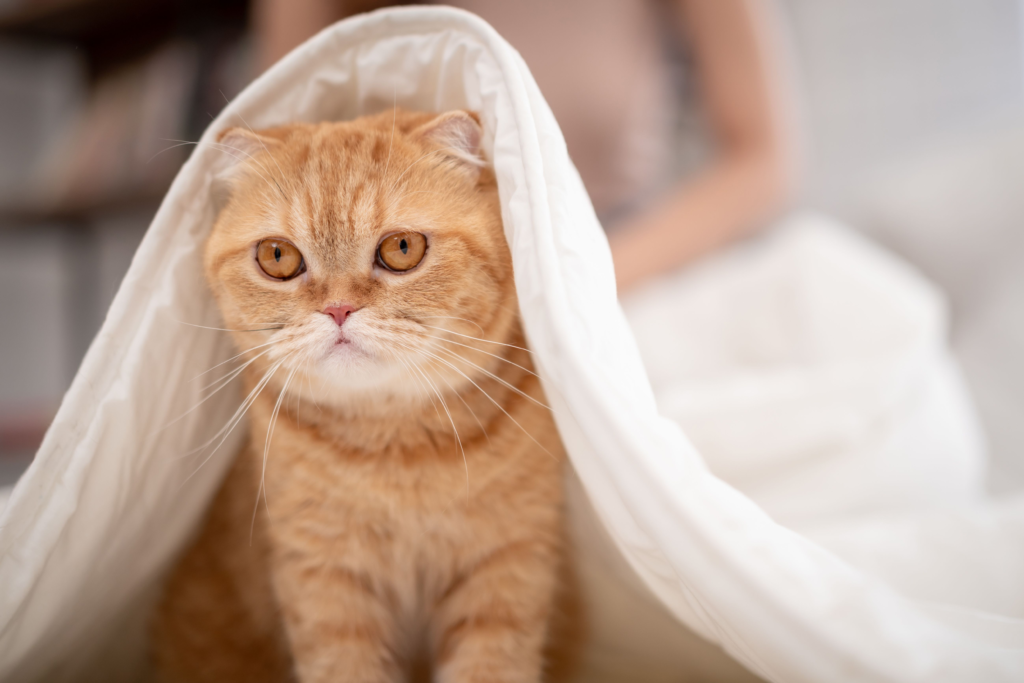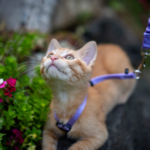Cat separation anxiety can be a challenging issue for both felines and their owners. When a cat becomes anxious or distressed when left alone, it can lead to destructive behaviors, excessive vocalization, and general unhappiness. Understanding how to manage and alleviate separation anxiety is essential for maintaining a harmonious household and ensuring your cat’s well-being. Here’s a guide to dealing with cat separation anxiety and strategies for a smooth transition.

Understanding Cat Separation Anxiety
Separation anxiety in cats manifests when a feline becomes overly attached to its owner and experiences stress or distress when left alone. This condition can result from changes in routine, moving to a new home, the addition of a new pet, or even changes in the owner’s schedule. Common signs of separation anxiety include:
- Excessive Vocalization: Persistent meowing or yowling when the owner is absent.
- Destructive Behavior: Chewing on furniture, scratching walls, or knocking over items.
- Inappropriate Elimination: Urinating or defecating outside the litter box.
- Over-Grooming: Excessive grooming leading to bald spots or skin irritation.
Strategies for Managing Separation Anxiety

- Establish a Routine: Cats thrive on routine and predictability. Establish a consistent daily schedule for feeding, playtime, and interactions. A stable routine helps your cat feel more secure and less anxious about your absences.
- Gradual Departures and Arrivals: Help your cat adjust to your departures by practicing gradual absences. Start with short periods of separation and gradually increase the duration. This approach helps your cat get used to being alone in small increments.
- Create a Safe Space: Provide a comfortable and secure area where your cat can retreat when you’re away. Equip this space with their favorite bedding, toys, and scratching posts. A designated safe space helps your cat feel more at ease during your absences.
- Use Interactive Toys and Enrichment: Keep your cat mentally and physically stimulated when you’re not around. Provide interactive toys, puzzle feeders, and engaging activities to distract your cat and reduce boredom. Enrichment helps occupy their mind and prevent destructive behavior.
- Practice Positive Reinforcement: Reward your cat for calm behavior and independence. Use treats, praise, or playtime as positive reinforcement when your cat stays calm during your departures. Avoid rewarding anxious behavior, as this can reinforce the anxiety.
- Consider Comfort Items: Leave behind items with your scent, such as worn clothing or a blanket, to provide comfort to your cat while you’re away. Familiar scents can help reduce anxiety and create a sense of security.
- Gradual Desensitization: Use gradual desensitization techniques to help your cat adjust to being alone. Practice leaving for short periods and gradually increase the time you’re away. Pair these absences with positive experiences, such as treats or playtime upon your return.
- Use Cat Pheromones: Feline pheromone diffusers or sprays can help create a calming environment for anxious cats. These products release synthetic pheromones that mimic natural cat scents, promoting relaxation and reducing stress.
- Provide Companionship: If feasible, consider adopting another cat or pet to provide companionship and reduce loneliness. However, ensure that both pets are introduced gradually and that the new addition is compatible with your existing cat’s personality.
- Seek Professional Help: If your cat’s separation anxiety is severe or persists despite your efforts, consult a veterinarian or a feline behaviorist. They can assess your cat’s behavior, provide tailored strategies, and, if necessary, recommend treatment options such as medication.
Conclusion
Dealing with cat separation anxiety involves understanding the underlying causes and implementing effective strategies to help your feline feel more secure and comfortable. By establishing a consistent routine, providing enrichment, and using positive reinforcement, you can help your cat adjust to being alone and reduce anxiety. With patience and appropriate interventions, you can create a smoother transition for your cat and foster a more relaxed and happy environment. If needed, professional guidance can provide additional support, ensuring your cat’s well-being and enhancing your bond with your furry friend.


